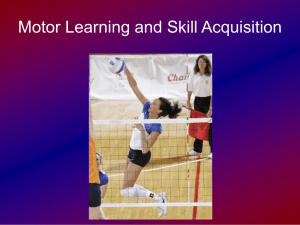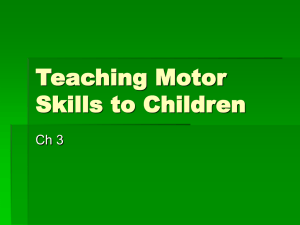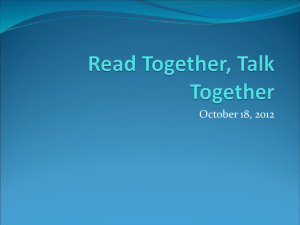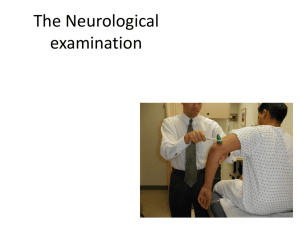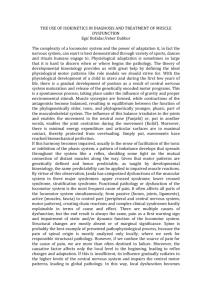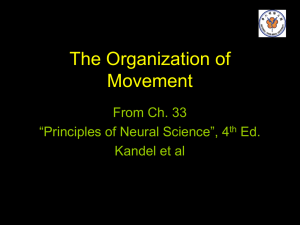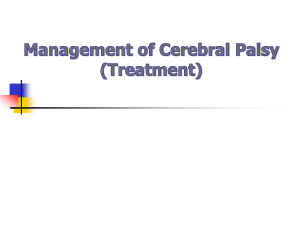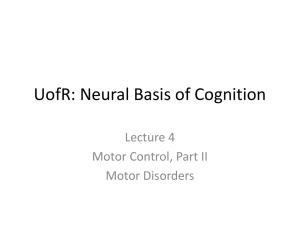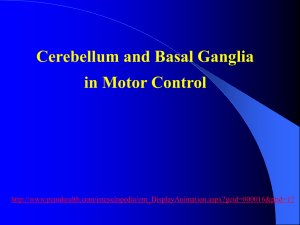Myself and My Body
advertisement
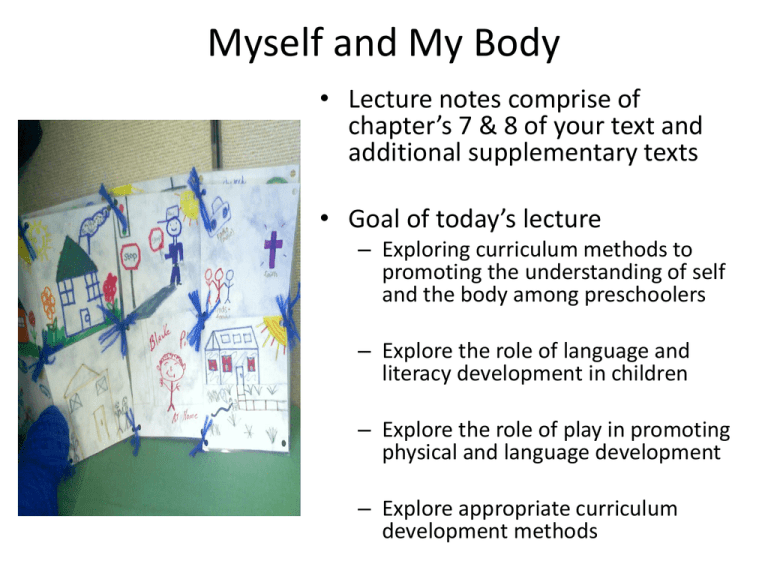
Myself and My Body • Lecture notes comprise of chapter’s 7 & 8 of your text and additional supplementary texts • Goal of today’s lecture – Exploring curriculum methods to promoting the understanding of self and the body among preschoolers – Explore the role of language and literacy development in children – Explore the role of play in promoting physical and language development – Explore appropriate curriculum development methods Myself and My Body Chapter 7 Key Points Regarding Play • Play and physical development improves development in the cognitive and socio-emotional domains – Brain development and neuroscience • Children should experience a physical fitness curriculum of 30 to 60 minutes daily – Fitness routines and basic physical movements – Good for forming good habits • Children should be encouraged to watch less TV daily and view more videos that encourage physical fitness PHYSICAL DEVELOPMENT • According to Gallahue (1993), children move through a sequence of motor skill development. – Reflexive movement. (birth to 1yr). • Infants engage in reflexive movements – Rudimentary movement. (2 yrs). • Basic motor skills acquired during infancy: Reaching, grasping sitting, standing, walking. – Fundamental movement. (2-7yrs). • Greater control over motor skills such as running, jumping, throwing, and catching. Isolated movement schemes are combined to form more complex movements. – Specialized movement. (7-to teens years). • Execution of skills committed to certain sports or recreation. More on Fundamental Movement & Activities • Take basic movements (i.e. walking, hoping) and change conditions (i.e. speed or pace) • Using a follow the leader approach • Movements that resemble animals • Create an obstacle course or simulate ways of crossing a river • Use nursery rhymes to stimulate movement • Suggest ways to go around a dowel or other stick • Lay out foot patterns on the floor for practicing fundamental locomotor movements Characteristics of Motor Development • Preschoolers exhibit capability of a range of motor skills regarding Gross motor development. – Locomotor skills. • Movements that facilitate jumping, hopping, running, and climbing. – Fine-Motor skills. • Preschool children learn to work with puzzles; cut with scissors; use brushes, pencils, pens, and markers. They manipulate blocks and clay. – Perceptual-Motor skills. • The ability to combine senses with emerging motor skills to engage the environment. Play and Physical Development: Factors of Consideration • Today, children are more sedentary than 20 years ago. • Childhood obesity and rising health problems is on the rise • Rise of non-traditional families (both parents working, single-parent families); often producing latch-key kids. • Diminishing settings for free play The Role and Importance of Play in Children’s Development Categories of Play • Directed Physical Play. – A comprehensive preschool program • Locomotor skills to include walking, running, hopping, throwing, catching, and other motor skills. • Fine motor skills such as block construction, sand play, and art activities. – Organized physical sports • Soccer, basketball, or T-ball; usually for kids 4 to 5 yrs of age. Free Play • Free play vs. Structured play. – Studies have noted that free play promotes greater muscular endurance and motor behaviors. • Free play is often restricted due to concerns for safety regarding children. – Children play hard – Unsafe neighborhoods • Through monitoring, adults are charged to provide a good balance of free play and structured play with many opportunities of expression. Adult Roles in Physical Play • Play is diminishing in the presence of – Television – Video games – Rising technocratic society. • Adults have responsibility to ensure that children receive adequate amounts of time engaged in play and exercise. •OR ELSE • • • . Health is compromised Important physical milestones are compromised Social and emotional development can be compromised Characteristics of Cognitive Development • According to Piaget – Children are preoperational – Children are able to use symbolic reasoning. – Preschoolers are still egocentric. • Seeing the world from a singular point of view. • Between 2-4yrs – Children develop symbolic function. • The ability to picture things through imagination that are not present. • Intuitive Thought (ages 4-7yrs) – Development of intuitive thought. – Begin to experiment with ordering and collecting things but it is still limited. (Challenge of centration) • Children are still very primitive in their reasoning Piaget’s Level of Cognitive Play • Practice/Functional Play. – Sensory-motor play. • Symbolic Play. – Initially appears during sensory motor stage but transitions to preoperationional. – Play through imagination and imitation of reality. – Also evolving to games with rules. Smilansky’s Levels of Cognitive Play • Children from 3 to school age alternate between levels of play. • Functional Play. – Physical play activities. The child uses repetition in physical actions, language, and manipulation of toys. • Constructive Play. – Children move from handling objects and materials to constructing or building for fun. • Dramatic/Pretend Play. – Imitation of human relationships thru symbolic representations. Vygotsky’s Perception of the Functions of Play • Representational Play. – Make-believe play which permits the child to deal with unrealizable desires. • Fantasy Play. – Develops as toddlers must learn to follow approved behaviors and delay gratification. – As the child matures, fantasy play increases as expectations by society increases Adult Facilitation to Produce Maximum Outcomes • Provide activities that lead to greater thinking and problem-solving. • Provide children with stimulating environments. • Be encouraging, positive, and supporting. • Distinguish between play as manipulation and play as active education. • Provide opportunities for children to engage in dramatic play that encourages cooperation and negotiation. • Make available materials that encourage representation through construction BENEFITS OF BEING PHYSICALLY FIT • Weight control • Decreased blood pressure • Improved concentration, retention, and attention • Decreased disruptive behavior • Reduced risk of diabetes and heart disease • Healthy bones, joints, and muscles • Better overall health • Decreased anxiety, stress, and depression • Increased energy and strength • More positive self-esteem Language and Literacy Development Chapter 8 Language Development • Verbal imitations of language begin in the first year of life – Sensitive years for language development – Children observe and begin to memic—starting small and moving to more complex combinations of word usage • By 5 years, children tend to have a large vocabulary, speak in sentences, and often able to use proper syntax or grammar – Children copy the language style of their family, neighborhoods, and key people around them The Power of Language/Literacy • Language is instrumental to: – – – – Thought Personal expression Social communication Friendship development – Conflict resolution – Later academic performance Play and Language/Literacy Development • Symbolic play is key to language and literacy development – It improves one’s ability at decontextualization THE TRUE STORY OF THE THREE LITTLE PIGS By the Wolf Alexander Wolf THE TRUE STORY OF THE THREE LITTLE PIGS • Discuss the learning points • Develop curriculum maps – Topic: The Three Little Pigs – Links to other learning domains and other concepts derived from the Three Little Pigs story – Develop five lesson plans (i.e., math/science, language/literacy, social studies, music/movement, art/aesthetics) – Develop a list of web and resource references that teachers can use to be effective doing the noted activities (a minimum of 10)




